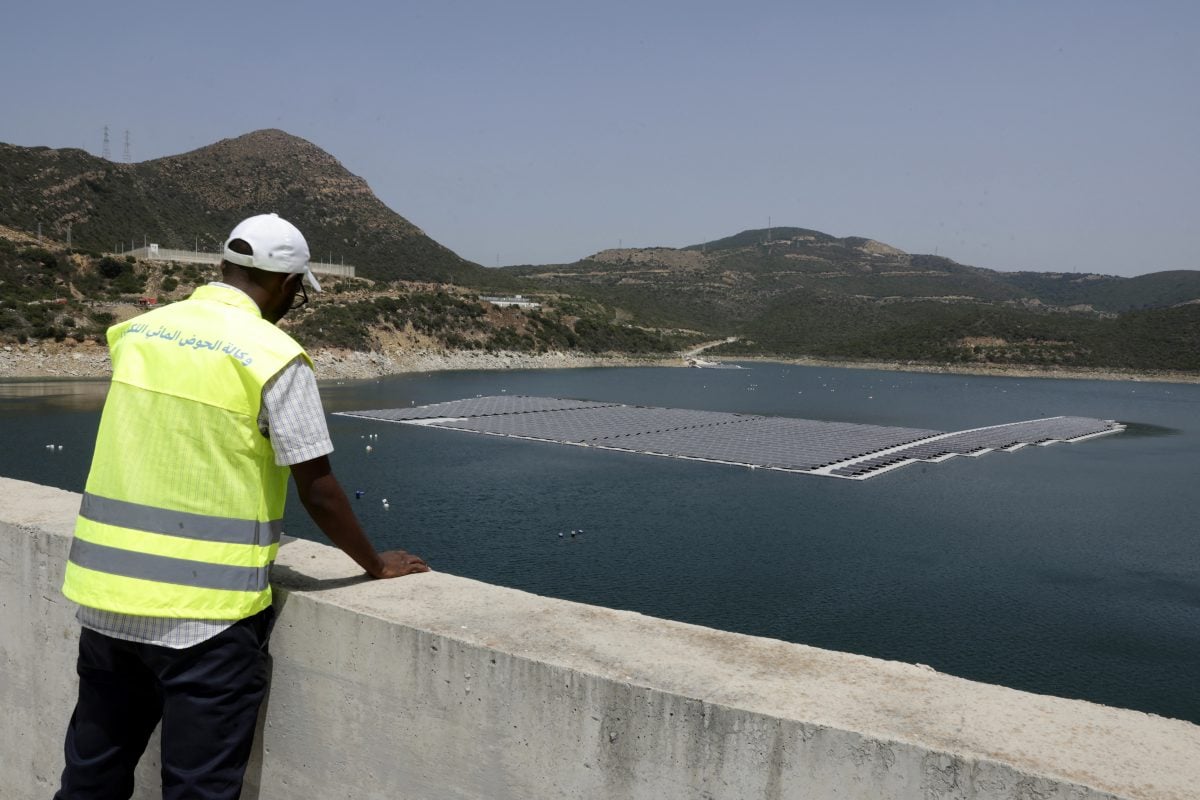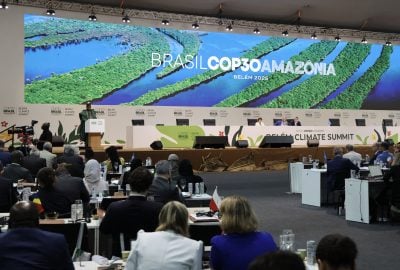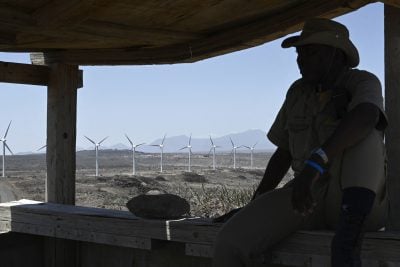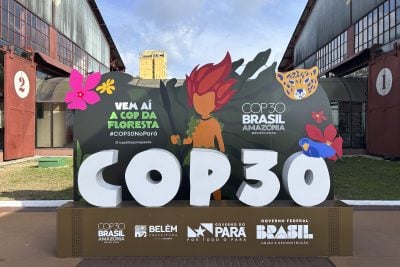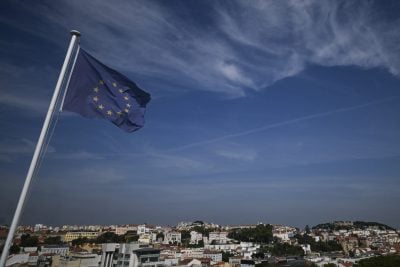In just two decades, the Middle East and North Africa’s electricity consumption has tripled, rising by more than 1,000 terawatt-hours —a surge that places it behind only China and India as a driver of global power demand.
Driven by extreme heat and water scarcity, the International Energy Agency (IEA) projects that power demand across the region will rise by 50% by 2035 in order to meet liveable conditions, the equivalent of adding Germany and Spain’s combined electricity use. Meeting that demand under current trends would mean burning roughly 2.8 million barrels of oil and 500 billion cubic metres of gas each year.
In its latest report on the future of electricity in the Middle East and North Africa, the IEA warns that this rise in demand could deepen the region’s dependence on gas-fired power; particularly in North Africa, where natural gas and oil already provide around 90% of electricity generation.
“This projection is alarming for North Africa as it highlights both economic and energy security risks,” says Abdelaziz Khlaifat, chair of the petroleum and energy engineering department at the American University in Cairo (AUC).
“Higher gas use could divert export revenues and trap countries like Egypt, Algeria, and Libya in a costly, carbon-intensive path just as global markets shift toward renewables. It would strain budgets, prolong subsidies, and limit funds for development – the region risks exchanging short-term stability for long-term vulnerability.”
Yet the IEA report also underscores the scale of opportunity for North Africa to reshape its energy systems. The region already attracts some of the fastest-growing clean-energy investment in the developing world – over $44bn in 2024, projected to rise by nearly 50% by 2035- and boasts some of the world’s highest solar irradiation levels.
Not a zero-sum choice
The path forward does not have to be a zero-sum choice between gas and renewables. That is what Ali Saffar, head of division for Europe, Middle East, Africa and Latin America at the IEA tells African Business.
“Gas will absolutely have a role to play in the electricity network,” he says. “Even in our most central scenarios, we see gas playing a big role alongside a large increase in solar, which will grow from about 5-6% of the mix today to roughly a quarter.”
Diversification, rather than replacement, is the real goal. The IEA’s World Energy Outlook 2024 stresses that a secure and sustainable transition in emerging economies will depend on using all available assets efficiently – including existing fossil-fuel infrastructure – while scaling up renewables and improving grids. In North Africa, that means gas remains part of the equation even as solar and wind surge.
The region’s well-developed gas networks can help stabilise power systems and balance variable renewables, providing a bridge toward deeper decarbonisation instead of an obstacle to it.
As Ali Saffar notes, “North Africa already has a pretty well-developed natural gas power generating capacity, and that can play an integral role in integrating an additional share of renewables. Between grid investments and existing capacity, countries can scale up variable renewables quite comfortably.”
That flexibility will be increasingly critical as climate pressures reshape the region’s energy needs. Rising temperatures and worsening water scarcity are driving up electricity demand not only for cooling homes and cities but also for desalinating seawater —two essential but energy-hungry processes that often rely on gas. Across the MENA region, cooling already accounts for up to 70% of peak electricity demand in the summer, while desalination consumes around 5% of total electricity output, a share expected to double by 2040 as freshwater demand grows.
As countries move away from thermal desalination, which burns fossil fuels, toward reverse osmosis, the process has become far more efficient and better suited to renewable integration.
“From an energy perspective, reverse osmosis is roughly ten times more efficient than thermal desalination,” says Saffar.
“You only need electricity, and that electricity can be renewable. Since 2018, no new thermal plants have been added; all new capacity is electricity-fed, which fits naturally with the region’s growing solar generation.”
Jauad El Kharraz, chief executive director of the Water Energy Climate Experts Network(WECEN) in Morocco, notes that his country’s mandate to power new desalination plants with renewables is “a critical test case”.
Its plan to produce 1.7 billion cubic metres of desalinated water annually by 2030, while ensuring that new plants are powered by renewables, reflects the kind of integrated water-energy plan approach needed to avoid locking economies into high-cost, high-carbon paths.
“Initiatives like TERAMED, aiming for 1 TW of Mediterranean renewables by 2030, are therefore essential to break this cycle and secure a sustainable future.”
Diverging paths
Every country in North Africa has its own particularities and challenges. Since launching its 2009 National Energy Strategy, Morocco has pursued one of the most ambitious clean-energy transitions in the Global South. It aims for 52% renewable installed capacity by 2030 – equivalent to roughly 40–45% of total electricity generation – and already reached about 38% of installed capacity in 2023, El Kharraz points out. That puts Morocco on par with countries like France (22.3%) and ahead of Japan (25.7%) in renewable share of electricity.
Its Noor Ouarzazate Solar Complex, still the world’s largest concentrated solar power plant, symbolises this push, capable of powering over a million homes. Wind capacity stood at 2.37 GW by end-2024, with another 2.6 GW under development, while solar potential remains enormous: irradiation levels reach 2,200 kWh/m²/year, among the highest globally.
“Morocco’s renewables push offers key lessons for neighbours like Algeria, Tunisia, and Egypt,” says El Kharraz.
“Strong political commitment and clear targets – like reaching 52% renewables by 2030 – drive progress. Strategic investments in flagship projects such as Noor attract funding, while policy frameworks like public-private partnerships enable scaling. Regional cooperation too, exemplified by TERAMED’s civil society-led 1 TW Mediterranean goal, can amplify ambition through shared financing and knowledge exchange.”
This exchange is crucial in a region where energy systems evolve at uneven speeds. Algeria remains bound to hydrocarbons, with renewables supplying barely 1% of its electricity despite ambitious plans for 22 GW of capacity by 2030 and vast untapped solar potential like the rest of peers. Tunisia, though committed to reaching 30% renewables by 2030, continues to wrestle with regulatory and financing constraints, leaving it reliant on gas and imports: roughly 11% of its power still comes from Algeria.
Egypt sits somewhere in between; more ambitious than Tunisia, less advanced than Morocco, but central to the region’s energy future.
“Egypt’s renewable sector shows promise but uneven progress,” says Abdelaziz Khlaifat from Cairo.
“Projects like the Benban Solar Park, one of the world’s largest with 1.8 GW capacity, showcase Egypt’s solar potential, while the El-Dabaa nuclear plant marks a broader diversification effort. The country also benefits from strong wind resources along the Gulf of Suez and growing grid interconnections, positioning it as a potential power-trade hub. Yet, financing gaps, grid limits, and regulatory hurdles slow momentum.
“Sustained progress will depend on policy stability, infrastructure upgrades, and private investment to speed up the energy transition.”
Resources and tech can meet demand
The International Energy Agency’s report is a wake up call, but one that should be met with enthusiasm rather than fear. While North Africa is going to experience one of the fastest surges of electricity demand in the next decade, it has the resources and technology to not just meet that demand, but also to exceed it if greater diversification, cuts to grid losses and regulatory harmonisation are put in place.
According to the IEA, the MENA region’s role “will have profound implications for global energy markets” as it shifts from being only a producer of oil and gas to a centre of electricity generation and trade. The Natural Resource Governance Institute (NRGI) describes partnerships between the European Union and North Africa as a “win-win formula for energy security, investment and development.”
From Tangiers, Jauad El Kharraz notes that under AfCFTA, there is also space for regional cooperation: “Morocco can export to West Africa via interconnections with Mauritania and beyond, fostering south-south ties.”
But before North Africa looks outward, it must look inward. The IEA’s Ali Saffar cautions against seeing the region purely through an export lens.
“It is premature to be talking about massive electricity exports in countries that have not really industrialised or where social pressures are so strong. Bringing stable, affordable electricity domestically is probably priority number one.”
North Africa’s demographic realities make this especially urgent. The region is home to one of the youngest populations in the world, with youth unemployment rates exceeding 22% according to the ILO. Reliable and affordable power is not only essential for homes and services, but also for attracting industry, creating jobs and anchoring low-carbon manufacturing. As Saffar notes, “simple commodity trading is not going to create the jobs nor the value nor the revenues to take care of some of these crucial issues: what matters is domestic value creation.”
His point resonates across the region, where export ambitions sometimes eclipse local needs. In Egypt, for instance, liquefied natural gas (LNG) exports have expanded even as the country faced rolling two to three-hour power cuts in 2024 due to fuel shortages and heat-driven demand surges.
Avoiding this trap will require pairing the energy transition with industrial policy, while ensuring that local firms, not just foreign investors, share in the gains. “Priority number two,” Saffar adds, “is seeing whether you can go up the value chain in developing a low-carbon industry on the back of your renewables endowment.”
If managed wisely, this dual approach —meeting local demand first and then scaling through regional and international trade – could make North Africa not only a bridge of clean power between continents but also a laboratory for inclusive industrial growth within Africa. The question now is not whether the region can produce enough clean energy, but whether it can harness that power to light up its own future before exporting it abroad.
Want to continue reading? Subscribe today.
You've read all your free articles for this month! Subscribe now to enjoy full access to our content.
Digital Monthly
£8.00 / month
Receive full unlimited access to our articles, opinions, podcasts and more.
Digital Yearly
£70.00 / year
Our best value offer - save £26 and gain access to all of our digital content for an entire year!
 Sign in with Google
Sign in with Google 